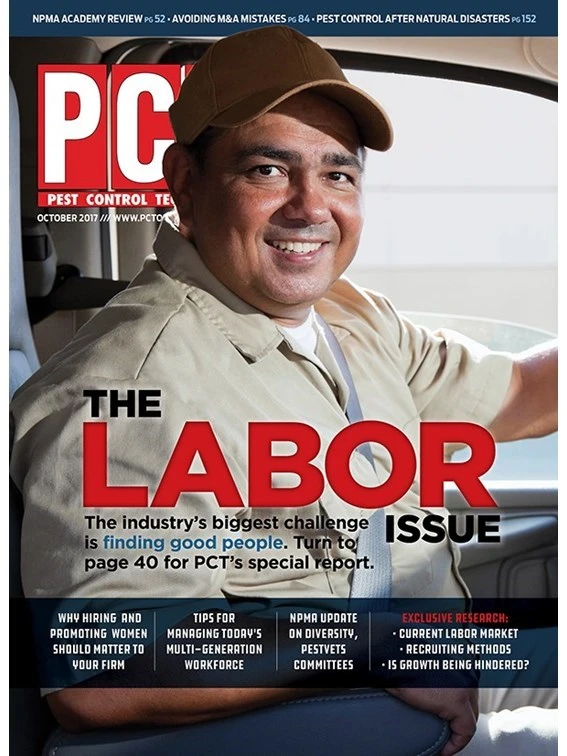With so many quality flashlights on the market, it’s not worth trying to identify a single best-in-class model for service work. Let’s look at the important factors of selecting a flashlight so you can decide for yourself.
The LEDs of today can produce amazing amounts of light efficiently and economically and will last for more hours than most people have in a career. Incandescent bulbs are only competitive at the highest light output levels, which are often too bright for indoor or close work.
OUTPUT. Light output should be matched to where you are and what you’re doing. Keep in mind, two lights of the same output in lumens may result in significantly different amounts of light striking a given surface at a given distance.
The greater the brightness, the more power is required and the shorter usable life of the power source. Learn to use only as much light as you need.
The following list may be helpful:
POWER SOURCE. Disposable batteries are called primary cells and are sold as acid, alkaline or lithium. If you find inexpensive batteries labeled as “heavy duty,” read the package carefully as they may be acid batteries that last an embarrassingly short period of time. Lithium batteries are more expensive than alkaline cells, but they generally last two or three times as long. This varies by flashlight and some consider them worth the cost, others do not. Personally, I use lithium cells.

The CR123 is a lithium battery that is used in many of the most powerful flashlights. If you choose such a light, be prepared to foot the battery bill at about $5 each if you buy them in a store. You can get them cheaper (~$1.30-$1.50) buying in bulk online, but quality can vary a great deal.
Rechargeable batteries are expensive, but they pay for themselves over time. The best performance for rechargeables are lithium ion cells. However, be warned, they require care in storage and handling to prevent fires or explosions. Nickel metal hydride (NiMH) rechargeables don’t perform as well, but they also have no battery memory and can hold a charge for months without self-discharge.
ON/OFF SWITCH. The switch is important. You will use it thousands of times. Some lights have a single switch that both turns the light on and off, and switches through the various brightness levels. You may have to click the switch several times every time you turn it on. Some lights have one switch to simply turn the light on and off and another switch that allows you to choose the desired level of light. When the light is switched on, it will be at the same light level it was when last switched off. There are some models that allow you to “dial” up the intensity of the light the same way you turn up the volume on a radio.
COST. The flashlight market changes rapidly for selection. Some lights are quite expensive, while others are amazingly inexpensive. Quality is not always a function of cost and so you may benefit from reading online reviews of individual lights to make your own determination. Try to find a manufacturer with a line of products you trust at prices that you find acceptable.
SIZE & WEIGHT. Size and weight are subject to personal preference. The large heavy lights of the past are unwieldy — today there are many more convenient options. Carry a light that is easy to transport. Some lights are configured to be handheld, others can be either handheld or worn as headlamps.
The light you carry should reliably provide an appropriate amount of light for the task at hand. It should be as affordable and efficient, as it is durable and reliable. Your preferences will become refined as you invest more time using each new model, developing a reference list of options that work best for you.
Mark Sheperdigian is a 1982 graduate of Michigan State University with a bachelor’s degree in entomology. He has held a variety of positions in service, sales, management and technical support. He is vice president of technical services for Rose Pest Solutions in Troy, Mich., and member of Copesan’s Technical Committee (CTC).

Copesan is an alliance of pest management companies with locations throughout North America. To learn more, visit www.copesan.com.

Explore the October 2017 Issue
Check out more from this issue and find your next story to read.
Latest from Pest Control Technology
- Donny Oswalt Shares What Makes Termites a 'Tricky' Pest
- Study Finds Fecal Tests Can Reveal Active Termite Infestations
- Peachtree Pest Control Partners with Local Nonprofits to Fight Food Insecurity
- Allergy Technologies, PHA Expand ATAHC Complete Program to Protect 8,500 Homes
- Housecall Pro Hosts '25 Winter Summit Featuring Mike Rowe
- Advanced Education
- Spotted Lanternflies, BMSBs Most Problematic Invasive Pests, Poll Finds
- Ecolab Acquires Guardian Pest Solutions





